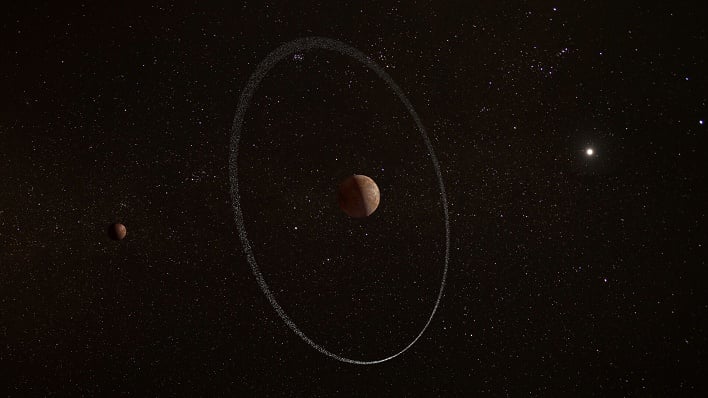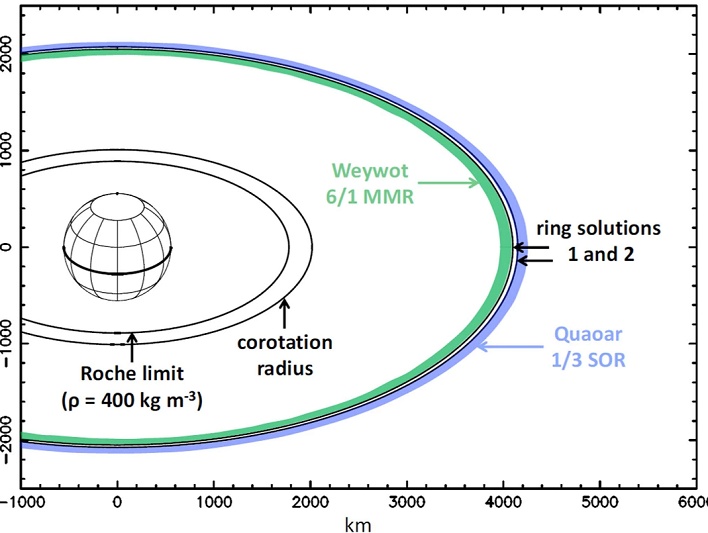Perplexing Ring Discovered Around Dwarf Planet Defies Math And Hides From Telescopes

A group of researchers detected the ring around Quaoar using a series of observations that were gathered between 2018 to 2021 using a combination of ground-based telescopes and the space-based telescope CHEOPS. The ring was detected while observing the dwarf planet passing in front of a succession of distant stars, an event known as an occultation.
The method of using occultation observes how the light from the occulted star diminishes, providing data about the occulting object's size and shape. It can also detect whether or not the passing object has an atmosphere. It was smaller drops in the light from the star before and after the main occultation that revealed the presence of material orbiting Quaoar.
Isabella Pagano of the INAF's Astrophysical Observatory of Catania, Italy, and a member of the Cheops Board, remarked about using CHEOPS to observe an occultation, "I was a little skeptical about the possibility to do this with CHEOPS. But we investigated the feasibility."

The biggest concern about using CHEOPS to observe an occultation was that the satellite's trajectory can be slightly modified due to drag in the upper atmosphere of Earth. Researchers first attempted to observe an occultation with the satellite which involved Pluto. That observation was not successful. However, the alignment was much more favorable for this second attempt, when the team observed Quaoar.
"When we put everything together, we saw drops in brightness that were not caused by Quaoar, but that pointed to the presence of material in a circular orbit around it," explained Bruno Morgado, who led the analysis. "The moment we saw that we said, 'Okay, we are seeing a ring around Quaoar.'"
The presence of a ring around Quaoar has presented a mystery for astronomers to solve. That mystery lies in how it exists at a distance where simple gravitational calculations suggest it should not. The ring orbits at over twice the distance of the Roche limit, beyond which the orbiting material should quickly coalesce under its own gravity to form a smaller moon. As theoreticians begin to ponder why this has not happened, others will continue to observe TNOs as they occult distant stars in an attempt to measure their physical characteristics, as well as to determine if any others might have ring systems.

